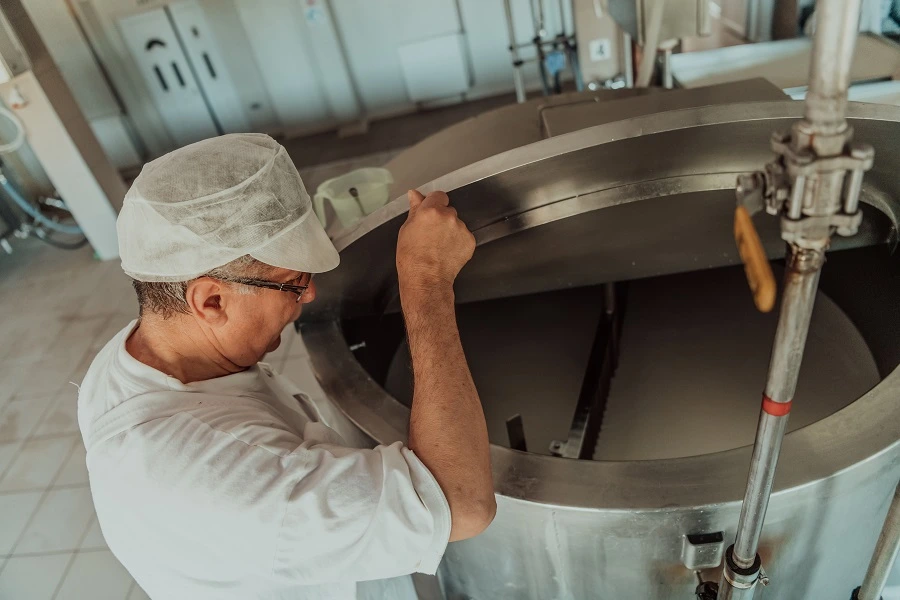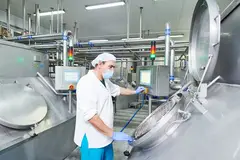Dairy defense: dsm-firmenich and APC Microbiome uncover novel phage-resistance systems to enhance fermentation
Key takeaways
- dsm-firmenich and APC Microbiome Ireland have unveiled how dairy fermentation bacteria use defense systems to protect against bacteriophages that disrupt dairy fermentation.
- The findings can help develop more robust, high-performing dairy cultures, enhancing fermentation reliability and reducing batch failures.
- The partnership exemplifies how collaboration accelerates innovation, combining academic research with real-world dairy production challenges.
dsm-firmenich and APC Microbiome Ireland have discovered how Lactococcus lactis bacteria used in dairy fermentations activate a novel defense system called “Audmula” against bacteriophages — viruses that can disrupt cheese and yogurt fermentation and cause quality and product losses.
The findings unlock new opportunities to design “more resilient, high-performing cultures” for large-scale food production. They can “redefine” culture protection in dairy as bacteriophage outbreaks remain one of the most costly and disruptive challenges in industrial dairy production, notes the company.
They allow manufacturers to enhance fermentation reliability and reduce the need for costly management practices.
Besides APC Microbiome Ireland, a Research Ireland center based at University College Cork, the French National Research Institute for Agriculture, Food and Environment (INRAE) also participated in the study, published in the Proceedings of the National Academy of Sciences (PNAS).
Food Ingredients First speaks with Noël van Peij, co-author and principal scientist at dsm-firmenich, to discuss why it is essential to control bacteriophage contamination and the potential of industry-academia collaborations to address real-world challenges in dairy manufacturing.

What challenges do dairy manufacturers face due to bacteriophage contamination? How does it happen?
Van Peij: Bacteriophage contamination remains one of the most costly and disruptive challenges in dairy manufacturing. These viruses infect the bacterial cultures — such as Lactococcus lactis — used in the fermentation step of the cheese and yogurt making process, leading to delayed or stalled acidification, inconsistent texture, and, in severe cases, complete batch failures.
Contamination typically occurs when phages enter the production environment via raw milk, whey recycling, or insufficient sanitation. Once inside, they can rapidly multiply and compromise the fermentation process, especially in large-scale cheese and yogurt production. Maintaining phage control in dairy processing requires continuous attention to hygiene, ingredient handling, and the rotation of phage-resistant cultures to mitigate the diverse bacteriophages that can enter production settings.
How exactly does the Audmula defense system work?
Van Peij: When a bacteriophage infects a cell, it effectively hijacks the cell’s metabolism to produce and assemble hundreds — sometimes thousands — of new viral particles. At the end of the process, generally within an hour, an infected cell lyses and releases all assembled phage particles into the fermentation process. The Audmula defense system represents a novel mechanism that modifies and thickens the bacterial cell wall.
After infection, once hundreds of new phage particles have assembled inside the cell, the phage release mechanism becomes inactive due to the modifications in the bacterial cell wall. As a result, the mature phages remain trapped within the infected cell, preventing their spread during fermentation. This unique mode of action — where one cell sacrifices itself to protect the wider population, observed for the first time in this study — strengthens culture defense without compromising bacterial viability, paving the way for more resilient starter cultures.
 By reducing fermentation failures, producers experience more predictable production schedules and stronger cost control, says Van Peij.
By reducing fermentation failures, producers experience more predictable production schedules and stronger cost control, says Van Peij.
What scientific or technical challenges did the team face during the study? How did you overcome them to ensure the findings translate to real-world dairy production?
Van Peij: One of the study’s central challenges was uncovering previously unknown phage-resistance systems in Lactococcus lactis — a breakthrough made possible by combining academic expertise with advanced identification technologies. The next step was to decipher how these systems operate within the bacterial cell and how phages, in turn, evolve to bypass them, revealing the complex interplay between bacterial defense and viral counter-strategy.
Through genomic analysis of 66 phage mutants that had overcome resistance, the team identified 15 viral genes linked to evasion. This molecular understanding of antiphage mechanisms offers valuable insight into phage-host dynamics and their implications for dairy fermentation.
To ensure real-world relevance, Lactococcus strains and phages were sourced directly from active dairy environments, grounding the research in authentic production conditions. This approach effectively bridges academic discovery with industrial application, supporting the development of next-generation, phage-resilient starter cultures.
What tangible benefits can dairy manufacturers expect from the phage-robust cultures?
Van Peij: For dairy manufacturers, the introduction of phage-robust cultures translates directly into greater process reliability and commercial performance. By minimizing fermentation failures, producers experience less unplanned downtime, more predictable production schedules, and stronger cost control. Fewer delayed or lost batches improve yield and overall efficiency, while consistent acidification and flavor development safeguard product quality and brand reputation.
Built with complementary defense systems and smart rotation strategies, these next-generation cultures are designed to anticipate phage-escape mechanisms, ensuring dependable protection across diverse dairy production environments worldwide.
 The research bridges the gap between discovery and real-world dairy production, ensuring practical applications.
The research bridges the gap between discovery and real-world dairy production, ensuring practical applications.
How does industry-academia partnership accelerate innovation speed-to-market, and will similar collaborations shape future R&D pipelines?
Van Peij: The collaboration between dsm-firmenich, APC Microbiome Ireland, and INRAE exemplifies how industry-academia partnerships can fast-track innovation. By combining real-world strains and phage data with world-class expertise, the team uncovered 13 new antiphage systems and validated them under production-like conditions. These partnerships not only accelerate discovery but also ensure that solutions are practical and commercially viable.
Future R&D pipelines will continue to depend on close collaboration with leading experts to address the complex microbial challenges inherent in food biotechnology.
What are the future plans for this project?
Van Peij: The next phase will integrate these findings into the culture development toolbox to deliver more tailored, phage-robust solutions for dairy manufacturers. This will involve expanding the phage-resistance portfolio to include more diverse defense systems, refining rotation schemes to prevent phage overlap and reduce the risk of escape, and exploring applications beyond dairy, such as plant-based fermentations.
As bacterial and phage interactions continue to evolve within industrial food fermentation, ongoing monitoring and innovation will be essential. Applying world-class science to ensure reliable phage control and resilient fermentations will remain a top priority.













